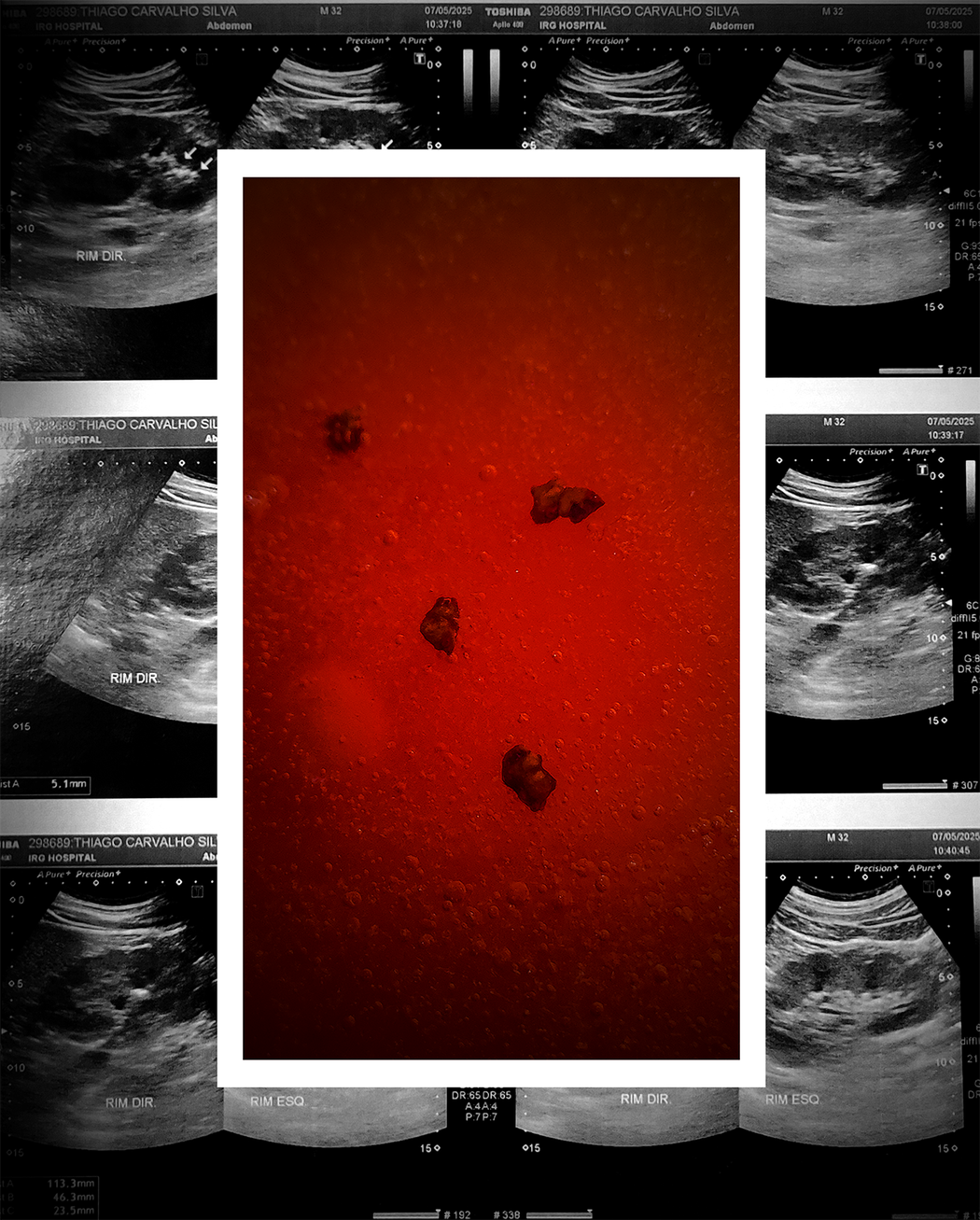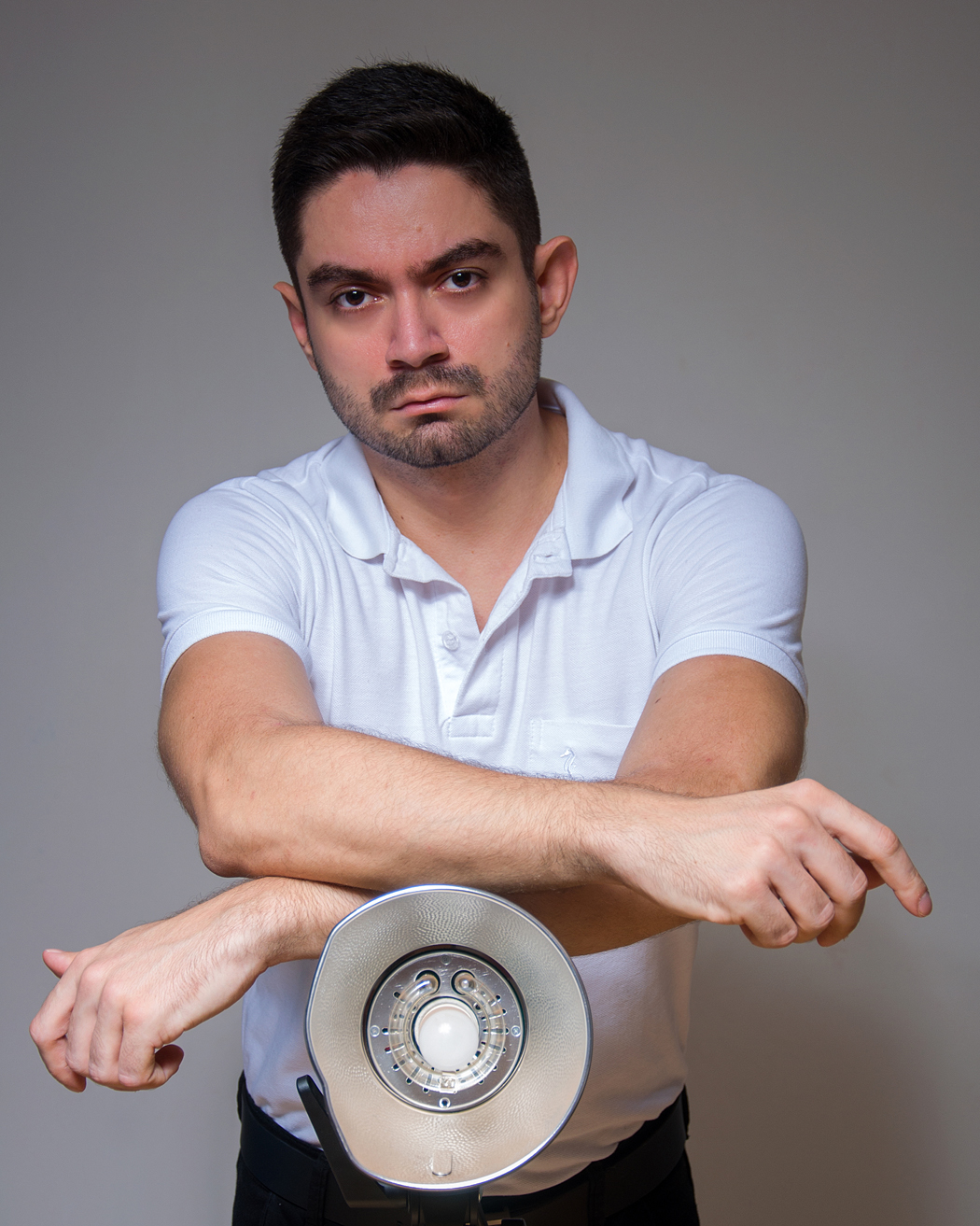Thiago Carvalho
Where do you live: Goiânia, Goiás, Brazil.
Your education: Graduated in Audiovisual, from the State University of Goiás (UEG).
Describe your art in three words: Still-under-construction
Your discipline: Starting with artistic photography, although I already have extensive experience with corporate, fashion and beauty photoshoots.
You’ve built a career in corporate, fashion, and beauty photography. What felt insufficient there, and what specifically pushed you toward contemporary art this year?
I still love working in these fields. I enjoy making things beautiful, even if in a more standard and commercial way, but at the same time, I felt an artistic impulse within me that was becoming increasingly silenced in order to meet the demands of a very conventional audience. This year, I decided to give voice to this artistic impulse and began to think about freer and more transgressive ways of experimenting with photography, including allowing for autobiographical elements, as I did now. I’m not questioning or saying I’ll give up the perfection I’ve always sought in most of my previous work, but it’s liberating to find in art a field where even imperfection can be purposeful, understood, and, more than that, even capable of carrying a message. A possibility I hadn’t had before! While I’m excited about the possibility of others identifying with this new approach, my focus with art is to explore what resonates primarily with me, without placing other people’s approval as something decisive.
How did your father’s experience with kidney stones shape the emotional stakes of this project before your own diagnosis?
The experience with my father, Bartolomeu, made me see kidney stones in a very dramatic way. I even feel like this is reflected in the image I’ve created. After all, it was one of the reasons for his death and what devastated his quality of life in his final years. I followed much of this journey and was often with my father during appointments, hospitalizations, exams and even the ICU. This also made me familiar with many terms, like creatinine and double J catheter, even before I had to deal with them. So, when I had my first pain crisis and learned the diagnosis, it was frightening, because my history with this problem was worrying. Today, I have a more normalized outlook and have created my own journey in a more rational and optimistic way. Now I understand that kidney stones are common, that there are many ways to prevent them and manage them, and that my father’s case became very serious because, unfortunately, he neglected the symptoms for years. If he somehow knows what’s going on, he should be happy to see that I anticipated the precautions and even turned it into art.
When did the idea to “re-signify” the stones emerge—before surgery, as you saw the images, or only when the surgeon handed you the fragments?
When I received the stones, shortly afterward, I began to associate them with my idea of pursuing more experimental approaches to photography. Before that, I was only concerned with taking care of my health. After the surgery, I felt my mind was at ease, so I began to think that mastering a creative tool as powerful as photography could give me the chance to not just let that experience end as something painful and stressful, but that I could transform it into something much better.
 Thiago Carvalho | The Stones I Carried | 2025
Thiago Carvalho | The Stones I Carried | 2025
Why did you choose to combine medical imaging (ultrasound) with your own photograph of the stones rather than present them separately?
The ultrasound images were all I had to visualize the stones, even though I couldn’t understand much about them. The image I created, however, is very close to what was going through my mind. This image also reflects a lot of my psychological state at the time. I wanted to superimpose the image I created to create a contrast between what I had concretely and what was going through my head, allowing my mind’s perspective to prevail, since it is the raw material of this image and also the source of the feelings that guided this entire experience.
The central image is saturated red—part wound, part cosmos. How did you arrive at this color and what does it signal for you?
The choice of intense red arose along with the idea. Red is dramatic, menacing, reminiscent of blood. When I shine a light on my skin, it seems like everything inside is red. When I talked about the stones, I seemed to automatically imagine them swimming in a red universe inside me. I didn’t experience any visible bleeding before the surgery, only a small amount detected in tests. However, the possibility of more intense bleeding was imminent. After the surgery, my urine was very red, and some fragments of the stones only came out after the procedure, so at some point, I had fragments of the stones swimming in blood inside me. So, red definitely connects with this experience in several ways. To achieve this color, I froze the stones in a portion of strawberry juice and later, during editing, I made adjustments to make the color even more intense and dark.
Can you walk us through the technical process: capturing the stones (lighting, scale/macro), digitizing the exams, compositing, and post-production decisions?
I was working with extremely small elements. The stones were no more than half a centimeter. I decided to use two smartphones to photograph, one for lighting and the other for capturing. I felt this would give me more mobility when dealing with something tiny. I tried using the camera’s macro mode, but the image generated in this format on my phone is smaller, and I wanted a larger image for more editing possibilities. So, I started using the camera’s zoom in PRO mode to get closer to the stones and try to capture their shapes. I opted for a slightly underexposed image, both to be able to use a low ISO and maintain a satisfactory level of definition, and also to maintain the intensity of the strawberry juice’s red color. I took the shots very improvisedly, on my kitchen table. As I mentioned before, I was looking for freer ways to practice photography and wanted to prove to myself that I don’t need a large, organized structure to create something interesting. The idea of placing the ultrasound images in the background only came to me in post-production. I felt they would better contextualize my image and add more narrative depth to it. I made adjustments to the white color so that the white edge of my photo blended with the white edges of the ultrasound images, forming this sort of grid that leads to the center of everything, where the red explodes and the stones are. Perhaps it’s only in the way the images are arranged and how they appear aligned, guided by proportional white lines, that my more commercial side still shines through. It’s as if, in some way, I still want to see things well-organized.
What role did chance play—unexpected textures, artifacts from the scans, or imperfections you chose to keep?
I come from segments of photography where having control over everything is very important and I believe that I will still make use of this control in many other artistic projects to come, but, in this work specifically, I was portraying a moment in which I lost a bit of control over things, so it didn’t make sense for me to portray this in a very controlled way. Early on, I accepted that I couldn’t define the positioning of the stones, as it was impossible to put the juice in the freezer without them moving. I ended up liking the fact that one of them was more in the background, blurry; I think it gave the image a more three-dimensional feel. After finishing the photo, I felt a bit strange about its definition; because I come from a background where excellent definition is almost always the norm. I almost decided to retake the image with my work camera to try to achieve even higher resolution, but I remembered that this new approach isn’t about perfection, but rather making sense. That photo was meant to represent my thoughts, and I don’t think in high definition. Furthermore, since I decided to superimpose it on the ultrasound images, which are quite abstract, something that wasn’t so sharp would have been more harmonious. The small bubbles came out exactly as I wanted; they create a feeling of fluidity, as if the liquid were moving, guiding the stones through my body toward the exit. Interestingly, a few days after I took this image, I naturally expelled a stone. I have a very mystical view of life, and I felt that expressing this situation through art may have sent a message to my body to also expel another stone!


Leave a Reply
You must be logged in to post a comment.